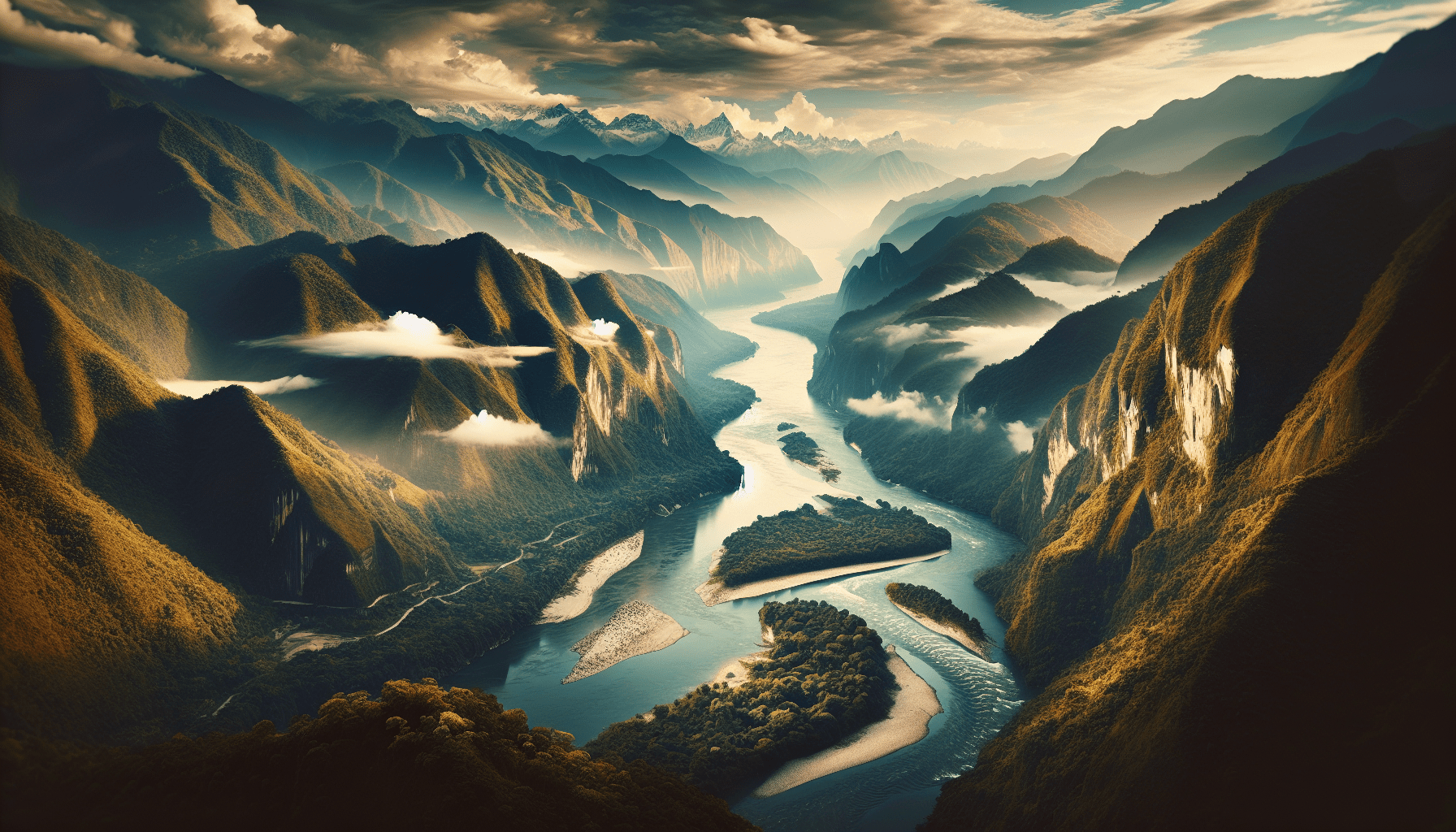
Imagine standing on the banks of a grand river, the water stretching out as far as the eye can see. Now, imagine that you are in Asia, a continent rich in natural wonders. In this vast continent, there is one river that stands above the rest, both in terms of length and expanse. So, which is Asia’s largest longest river? Let’s embark on a journey to uncover the answer to this fascinating question.
Yangtze River
Introduction to Yangtze River
The Yangtze River, also known as the Chang Jiang, is one of the most prominent rivers in Asia and holds great significance for China. It is the longest river in Asia and the third-longest in the world, flowing through the heart of China from the Tibetan Plateau to the East China Sea. The river stretches over 6,300 kilometers, passing through diverse landscapes and playing a vital role in the history, ecology, and economy of the region.
Geographical Information
The Yangtze River originates from the Tanggula Mountains, located in Qinghai Province on the Tibetan Plateau. It then meanders through a variety of topographies, including mountains, plateaus, and plains, before reaching the East China Sea near Shanghai. The river traverses eleven provinces, serving as a natural dividing line between North China and South China. Its watershed covers an astounding 1.8 million square kilometers, making it an influential river system in the continent.

Length of the Yangtze River
With a length of approximately 6,300 kilometers, the Yangtze River holds the title of being the longest river in Asia and the third-longest globally. It surpasses other renowned rivers like the Yellow River, Indus River, and Mekong River. The river’s vast distance allows it to impact a significant portion of China’s landscape and sustain a rich array of ecosystems.
Historical Significance
The Yangtze River has been an integral part of Chinese civilization for thousands of years. It has witnessed the rise and fall of numerous dynasties, played a crucial role in the country’s economic development, and acted as a lifeline for countless communities along its banks. The river is deeply interconnected with Chinese culture, history, and folklore, with many ancient cities and relics residing on its shores. Countless poems, songs, and tales have been inspired by its awe-inspiring presence.

Ecological Importance
The Yangtze River is home to a remarkable diversity of flora and fauna, making it a critically important ecosystem in Asia. It provides habitat for several endangered species, such as the Chinese alligator, Chinese sturgeon, and finless porpoise. The river also sustains lush wetlands and lakes that support a wide variety of migratory birds. Protecting the ecological balance of the Yangtze River is vital to preserving its unique biodiversity and ensuring the sustainability of the region.
Economic Importance
The Yangtze River plays a pivotal role in China’s economy and is often referred to as the “golden waterway.” It serves as a major transportation route, connecting inland cities with the coast and facilitating the movement of goods. The river’s vast basin is home to numerous industrial zones, power stations, and ports that contribute significantly to China’s economic growth. Additionally, the Yangtze River is a significant source of hydroelectric power, generating clean energy for millions of people.
Major Cities Along the Yangtze River
The Yangtze River provides a lifeline for several major cities in China, which have flourished due to the river’s economic and cultural significance. Some of the prominent cities along the Yangtze River include Shanghai, Chongqing, Wuhan, Nanjing, and Yichang. These cities offer a unique blend of historical landmarks, modern infrastructure, and vibrant cultural scenes, attracting tourists and businesses alike.
Tourism Along the Yangtze River
The Yangtze River’s scenic beauty and cultural heritage make it a popular tourist destination. Cruises along the river offer breathtaking views of the Three Gorges and allow visitors to explore ancient sites such as the Fengdu Ghost City and Shibaozhai Pagoda. The famous Three Gorges Dam, the world’s largest hydroelectric project, is another significant attraction along the river. The Yangtze River cruise industry has boomed in recent years, attracting travelers from all over the world to experience the beauty and grandeur of this iconic waterway.
Environmental Issues
Despite its ecological importance, the Yangtze River faces numerous environmental challenges. Pollution due to industrial waste, agricultural runoff, and urbanization poses a significant threat to the river’s health. Overfishing, habitat degradation, and the introduction of invasive species also harm the river’s delicate ecosystem. The Chinese government and environmental organizations are actively working to mitigate these issues through initiatives focused on conservation, water treatment, and sustainable development.
Conclusion
The Yangtze River stands as a remarkable testament to the interplay between nature, history, and human civilization. Its unrivaled length, historical significance, ecological importance, and economic impact mark it as one of Asia’s most influential and treasured waterways. Preserving the Yangtze River’s natural beauty and restoring its ecological balance are vital for the region’s sustainable development and for future generations to appreciate the wonders of this majestic river system.



